Monday 28 December 2015
Wednesday 23 December 2015
Kyoto stay
http://www.tripadvisor.com/VacationRentalReview-g298564-d3474906-The_Gion_House_is_Centrally_Located_in_Gion-Kyoto_Kyoto_Prefecture_Kinki.html
http://www.tripadvisor.com/VacationRentalReview-g298564-d2056416-Stay_Important_Cultural_Propertie_ArashiyamaHanare-Kyoto_Kyoto_Prefecture_Kinki.html
http://www.tripadvisor.com/VacationRentalReview-g298564-d5228937-A_Japanese_Traditional_House_Kyoto_Miyabi_Inn-Kyoto_Kyoto_Prefecture_Kinki.html
http://www.tripadvisor.com/VacationRentalReview-g298564-d6521692-Authentic_Wooden_Casa_Historic_Gion-Kyoto_Kyoto_Prefecture_Kinki.html
http://www.tripadvisor.com/VacationRentalReview-g298564-d2433806-Stylish_Chalet_in_Quaint_Shirakawa-Kyoto_Kyoto_Prefecture_Kinki.html
http://www.tripadvisor.com/VacationRentalReview-g298564-d4707321-Homely_Japanese_style_house_by_the_Takase_river-Kyoto_Kyoto_Prefecture_Kinki.html
http://www.tripadvisor.com/VacationRentalReview-g298564-d8790882-Whole_of_house_in_Kyoto_city-Kyoto_Kyoto_Prefecture_Kinki.html
http://www.tripadvisor.com/VacationRentalReview-g298564-d6742327-Traditional_house_in_convenient_location-Kyoto_Kyoto_Prefecture_Kinki.html
http://www.tripadvisor.com/VacationRentalReview-g298564-d8475698-Great_apartment_in_a_wonderful_area_near_the_river-Kyoto_Kyoto_Prefecture_Kinki.html
http://www.tripadvisor.com/VacationRentalReview-g298564-d2056416-Stay_Important_Cultural_Propertie_ArashiyamaHanare-Kyoto_Kyoto_Prefecture_Kinki.html
http://www.tripadvisor.com/VacationRentalReview-g298564-d5228937-A_Japanese_Traditional_House_Kyoto_Miyabi_Inn-Kyoto_Kyoto_Prefecture_Kinki.html
http://www.tripadvisor.com/VacationRentalReview-g298564-d6521692-Authentic_Wooden_Casa_Historic_Gion-Kyoto_Kyoto_Prefecture_Kinki.html
http://www.tripadvisor.com/VacationRentalReview-g298564-d2433806-Stylish_Chalet_in_Quaint_Shirakawa-Kyoto_Kyoto_Prefecture_Kinki.html
http://www.tripadvisor.com/VacationRentalReview-g298564-d4707321-Homely_Japanese_style_house_by_the_Takase_river-Kyoto_Kyoto_Prefecture_Kinki.html
http://www.tripadvisor.com/VacationRentalReview-g298564-d8790882-Whole_of_house_in_Kyoto_city-Kyoto_Kyoto_Prefecture_Kinki.html
http://www.tripadvisor.com/VacationRentalReview-g298564-d6742327-Traditional_house_in_convenient_location-Kyoto_Kyoto_Prefecture_Kinki.html
http://www.tripadvisor.com/VacationRentalReview-g298564-d8475698-Great_apartment_in_a_wonderful_area_near_the_river-Kyoto_Kyoto_Prefecture_Kinki.html
Sunday 20 December 2015
紫滕2
日本 櫻花 拍膩了? 紫藤 天空、 粉蝶花 海,帶你欣賞不同的 東瀛 之春
Lucy Wu 發表於 2014年7月25日 11:10
引言圖片- 日本 櫻花 拍膩了? 紫藤 天空、 粉蝶花 海,帶你欣賞不同的 東瀛 之春 現在到 日本 越來越方便,在春天赴往 賞櫻 的人也越來越多,攝影玩家們間拍日本 春櫻 的作品搜下來也有好幾頁,甚至有人拍 櫻花 拍到膩了?如果真的是這樣,或許下一趟日本春天賞花之行,可以不要再以櫻花為主,這次先跟我們來看看日本 關東 壯觀的 紫藤 樹傘 和 粉蝶花 花海 ,看如此夢幻的美景是否令你燃起攝影魂,想拍攝不一樣的日本 春天 。
紫藤天空,足利紫藤花園
先前在站內分享的「世界夢幻步道」的文章中,提到過日本九州河內富士花園的紫藤隧道,大片從天垂降的紫藤花瀑,夢幻地令人心神嚮往。想要看到這樣的美景,不一定要到九州,在日本關東栃木縣足利市中的花卉公園中,也有顆百年紫藤樹,枝幹蔓延約1,990平方公尺,每到花時,有如撐開一把紫色大傘一般,萬千粉紫花藤垂墜,盛況不輸紫藤隧道,且不僅白天可賞,夜晚的景緻也別是一番風味。這樣的景緻,也在今年被CNN評選為十大夢幻旅遊勝地之一。
足利花卉公園的紫藤花時一般在4月中旬到5月中旬,可說是緊接在櫻花季後面,如果有的朋友小小錯過了關東地區的櫻花季,大可選擇到足利市走一遭,見見這在台灣難得一見的美景。
詳細情報參考:足利紫藤花園官方網站
紫藤
5月:紫藤,耐心栽植的多彩瀑布
(圖/tripadvisor)
哪裡看得到?梔木縣足利、九州河內藤園、京都宇治平等院等(圖/tripadvisor,拍攝地點為九州河內藤園)
華麗的紫藤如瀑布般傾洩而下,這樣的絕景需要經年累月耐心的栽植才會出現,而夜間點燈的紫藤會比白日更加豔麗。
Japan Buddhist Temples & Shinto Shrines: Listing
- Kyoto Shrines
- Tokyo Temples
- Tokyo Shrines
- Nara Temples
- Fukuoka Temples & Shrines
- Hiroshima Temples
- Nagasaki Temples & Shrines
Japan Temples & Shrines

Japan has a wealth of religious architecture - Kyoto alone is estimated to have well over 2,000 temples and shrines. But it is not just in the large cities where the visitor will find Buddhist temples and Shinto shrines - nearly every village in Japan will have a local shrine or temple.
Most temples and shrines in Japan are free to enter but the more famous, historic temples will charge an admission fee for which you will receive entry and usally an explanatory leaflet in either Japanese or English.
Japanese temples usually close around 4pm or 5pm, though shrines often stay open around the clock.
Many temples and shrines in Japan are set in well-tended garden spaces and are often connected with local festivals and other events.
No visit to Japan would be complete without at least one visit to a Japanese temple or shrine.
Kyoto Temples
Byodoin Temple - World Heritage Site - located in Uji south of Kyoto.
Chionin Temple - HQ of the Jodo sect of Japanese Buddhism.
Chishakuin Temple - famous for its lovely gardens.
Daigoji Temple - World Heritage Site - established in the east of Kyoto in 874.
Daikakuji Temple - Shingon "Temple of the Great Science" with lovely lakeside location.
Daitokuji Temple - large Rinzai Zen temple complex with 22 sub-temples.
Eikando Temple - located in Higashiyama and known for its autumn leaves.
Enkoji Temple - small, delightful temple and garden in eastern Kyoto.
Enryakuji Temple - large temple complex located on the summit of Mt. Hiei.
Entsuji Temple - famous for its garden's use of "borrowed scenery."
Funda-in - or more commonly, Sesshuji, is a small sub-temple of Tofukuji, containing a garden by Sesshu.
Ginkakuji Temple - World Heritage Site - aka the Silver Pavilion and previously a villa of the shogun Yoshimasa.
Honen-in Temple - small, atmospheric temple near Philosopher's Walk.
Honnoji Temple - city center temple where warlord Oda Nobunaga met his end.
Kenninji Temple - founded by Eisai in 1202 and the oldest Zen temple in Kyoto.
Kinkakuji Temple - World Heritage Site - the Golden Pavilion and a Kyoto icon.
Kiyomizu Temple - World Heritage Site - Kyoto's most popular temple especially with young people.
Kodaiji Temple - a nunnery established by Kitano Mandokoro (Nene), the widow of Toyotomi Hideyoshi.
Koryuji Temple - World Heritage Site - established in the memory of Prince Shotoku.
Kozanji Temple - World Heritage Site - contains Japan's oldest tea field.
Kuginuki Jizo aka Shakuzoji Temple is dedicated to the relief of pain through the offering of a pair of pliers and two 8" nails.
Manpukuji Temple - founded by the Chinese priest Ingen and built in Ming style.
Manshuin Temple - Tendai-sect temple located in the Higashiyama district.
Myomanji Temple - peaceful temple with Indian-style pagoda.
Myoshinji Temple - large Zen temple with over 40 sub-temples.
Nanzenji Temple - Zen temple associated with vegetarian cuisine.
Ninnanji Temple - World Heritage Site - the "Temple of Benevolent Harmony."
Nishi & Higashi Honganji Temples - World Heritage Site - wealthy Jodo-Shinshu temples located near Kyoto Station.
Rokkakudo Temple - the spiritual home of ikebana in Japan.
Rokuoin Temple - known for its fall leaves and shukubo lodgings for women only.
Rozanji Temple - situated near the Imperial Palace and hosts a setsubun festival in February with ogres.
Ryoanji Temple - World Heritage Site - the world's most famous Zen stone garden.
Saihoji Temple - World Heritage Site - aka the "Moss Temple."
Sanjusangendo Temple - known for its 1,001 wooden statues of Kannon.
Sanzen-in Temple - in the village of Ohara in north east Kyoto is known for the splendor of its gardens.
Sekizanzenin Temple - tranquil mountainside temple near Shugakuin Rikyu.
Sembon Shakado - dates from 1227 and the Main Hall is one of the oldest buildings in Kyoto.
Sennyuji Temple - is a large Shingon sect temple complex with imperial tombs close to Tofukuji.
Shisendo Hermitage - small Soto Zen sect temple in Higashiyama
Shokokuji Temple - Rinzai Zen temple near the Gosho and Doshisha University
Shoren-in Temple - Tendai sect temple famous for its gardens and giant camphor trees.
Tenryuji Temple - World Heritage Site - located in the Arashiyama district of western Kyoto.
Tofukuji Temple - one of the most important Zen temples in Kyoto.
Toji Temple - World Heritage Site - near Kyoto Station and known for its pagoda and monthly markets.
Tojiin Temple - pleasant temple near Ritsumeikan Kinugasa campus.
Kyoto Shrines
Fushimi Inari Shrine - known for its 1000s of torii gates.
Goryo Shrine - dedicated to the protection of the ancient capital.
Heian Shrine - Heian Shrine is a scaled-down reproduction of the original Imperial palace (Daigoku-den) built in 794.
Hirano Shrine - famous for its cherry blossoms in season.
Iwashimizu Hachiman-gu Shrine - is dedicated to Hachiman and has an interesting connection with Thomas Edison.
Kamigamo Shrine - World Heritage Site - sister shrine of Shimogamo Shrine.
Kitano Tenmangu Shrine - is dedicated to Tenjin, the patron saint of students.
Kumano Shrine - founded in the 9th century by Nichiren.
Matsuo Taisha Shrine - known for its connection with sake and sake brewers.
Nashinoki Shrine - small shrine on the north east side of Kyoto Imperial Palace famous for its fresh water spring.
Shimogamo Shrine - World Heritage Site - sister shrine of Kamigamo Shrine and home of the Aoi Festival.
Shiramine Shrine is associated with the game of kemari and popular with soccer players of all levels.
Waratenjin - dedicated to safe child-birth.
Yasaka Shrine - popular shrine in Gion associated with the Gion matsuri and the area's geisha.

Ryoanji Temple in western Kyoto is as iconic as Mt Fuji in Japan

Pagoda and Main Hall of Sensoji Temple, Asakusa, Tokyo
Tokyo Temples
Eko-in Temple - the spiritual home of sumo in Ryogoku.
Gokokuji Temple - Edo Period temple connected with the Tokugawa clan.
Kita-in Temple Kawagoe - temple of the famous 500 rakan (arhats).
Sengakuji Temple - temple associated with the 47 Ronin story.
Sensoji Temple - historic temple in Asakusa.
Tokyo Top 10 Temples & Shrines - a listing of the best temples and shrines in the capital.
Toyokawa Inari Akasaka - is a Buddhist temple that venerates a Shinto deity, the fox god, or Inari.
Temples in Tokyo's Koenji district (Suginami ward) - temple listing in Koenji.
Yushima Seido - Confucian temple and educational establishment.
Zojoji Temple - impressive temple close to Tokyo Tower.
Tokyo Shrines
Kanda Myojin - near Akihabara - is home to the Kanda matsuri, one of Tokyo's big three festivals.
Meiji Shrine - shrine set in huge grounds and dedicated to the Emperor Meiji.
Nezu Shrine - famous for its 1,000's of azaleas in May.
Yasukuni Shrine - controversial shrine which enshrines Japan's war dead.
Yushima Tenmangu (Tenjin) - famous shrine for scholars.
Nara Temples
Chuguji Temple - a nunnery, next door to Horyuji, and home to two National Treasures.
Gangoji Temple - was founded in Asuka and moved to Nara in 718 (UNESCO World Heritage Site).
Hokiji Temple - Asuka era temple with original 3-story pagoda.
Hokkeji Temple - was established as a nunnery by the Empress Komyo in the 8th century.
Horinji Temple - small temple in the Ikaruga district with some superb Buddhist images on display in its Treasure House.
Horyuji Temple - home to some of the world's oldest wooden buildings.
Jokyoji Temple - is a Jodo Shinshu sect temple of Japanese Buddhism.
Kaidan-in - is part of Todaiji Temple and was Japan's first ordination hall for monks and nuns.
Kairyuoji Temple - dates from 731 and was built to protect the Heijo Palace from evil believed to emanate from the north east.
Kofukuji Temple - UNESCO World Heritage Site famous for its ancient 5-story pagoda and priceless Buddhist statues.
Muroji Temple - an ancient seat of mystical power.
Saidaiji Temple - the Great Western Temple and counterpart to Todaiji (Great Eastern Temple).
Todaiji Temple - includes the world's largest wooden structure and the 15m bronze Daibutsu (Great Buddha), cast in 749: also the largest of its kind in the world.
Toshodaiji Temple - was founded by the Chinese monk Ganjin in 759 and is a UNESCO World Heritage Site.
Yakushiji Temple - is a UNESCO World Heritage Site famous for its historic East Pagoda.
Chiba Temples
Naritasan Shinshoji Temple - very large, ancient temple near Narita Internaional Airport.
Saitama Shrines
Mitsumine Shrine - the wolf kami are believed to protect from fire and theft.
Shinmeisha Shrine - Tokorozawa shrine famous for its doll burning ceremony.

Yasukuni Shrine in Tokyo is a controversial shrine that enshrines Japan's war dead

Komyozenji Temple's front garden is a dry stone Zen garden, the rocks of which spell out the character for light
Kawasaki Temples & Shrines
Kawasaki Daishi Temple (Heiken-ji) - dedicated to the founder of Shingon Buddhism - Kukai.
Shimane Temples & Shrines
Gakuenji Temple - ancient 7th century temple.
Ichibata Yakushi Temple - temple dedicated to prayer for the cure of eye diseases.
Izumo Taisha - is Japan's second most important shrine after Ise.
Taikodani Inari Shrine is the 5th largest Inari shrine in Japan.
Nagano Temples & Shrines
Suwa Taisha Grand Shrine - located close to Lake Suwa and one of the oldest shrines in Japan.
Zenkoji Temple - Nagano's most important temple.
Osaka Temples & Shrines
Shitennoji Temple - Japan's oldest state temple founded by Prince Shotoku.
Sumiyoshi Taisha - a 3rd century shrine in Osaka dedicated to sailors and seafarers.
Hiroshima Temples
Fudoin Temple survived the atomic bomb and some of its buildings date back to the 16th century.
Mitaki-dera Temple ("Three Waterfalls Temple") in Hiroshima Prefecture is an historic Shingon-sect temple dating back to the year 809.
The Onomichi Temple Walk includes 25 Buddhist temples that are linked on the route.
The Hiroshima Peace Pagoda, on a hill overlooking the city, was built in 1966, and has become another symbol of the city.
Izu Temples
Shuzenji Temple - supposedly founded by Kukai in 807.
Shikoku Temples
Yakuoji Temple - is number 23 on the Shikoku 88 Temple Pilgrimage.
Sado Temples
Temples on Sado Island - see a listing of some of Sado's most historic temples.
Fukui Temples & Shrines
Eiheiji Temple - Eiheiji is one of Japan's most famous temples - an active training center of Soto Zen Buddhism in Fukui Prefecture.
Fukuoka Temples & Shrines
Shofuku-ji Temple - the beginnings of Zen in Japan.
Kaidan-in - a Nara Period ordination hall that was originally part of Kanzeonji Temple.
Kushida Shrine - hosts the Yamakasa Gion Matsuri, the biggest festival in Fukuoka.
Komyozenji Temple Dazaifu - Rinzai Zen temple.
Nanzoin Reclining Buddha - said to be the world's biggest bronze statue.
Umi Hachimangu Shrine - connected with the Ojin Legend.
Nagasaki Temples & Shrines
Sofukuji Temple - Ming Dynasty Chinese temple.
Suwa Shrine - home to the Kunchi Festival.
Confucius Shrine - built in 1893 by Chinese residents of Nagasaki.
Kofukuji Temple - the first Chinese temple built in Nagasaki.
Shofukuji & Fukusaiji Temples Nagasaki - two important and historic temples in Nagasaki.
Yamaguchi Temples & Shrines
Tokoji Temple Hagi - family temple of the once-ruling Mori clan.
Kumamoto Shrines
Kumamoto Shrines - see a shrine listing.
Okayama Temples & Shrines
Iyama Hofuku-ji Temple - connected with the life of the artist Sesshu.
Kibitsu & Kibitsuhiko Shrines enshrine the kami of a prince sent to the area to quell a legendary demon.
Saijo Inari Okayama - one of the 3 great Inari shrines in Japan.
Kyushu Shrines
Terukuni Shrine - in Kagoshima enshrines the 28th Lord of Satsuma, Shimazu Nariakira.
Read a listing of the most important shrines in Kyushu.

Shimenawa sacred rope and stairs to Kitaoka Shrine in Kumamoto, Kumamoto Prefecture
Read more: http://www.japanvisitor.com/japan-temples-shrines#ixzz3uuom4TDw
Monday 14 December 2015
Monday 16 November 2015
Saturday 17 October 2015
Art and Photography Museums
Art
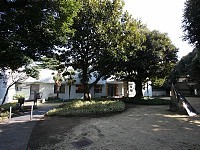 |
|
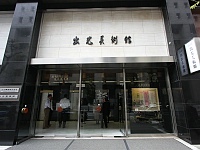 |
|
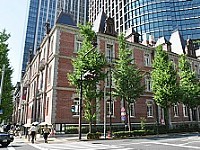 |
|
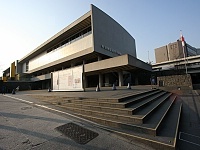 |
|
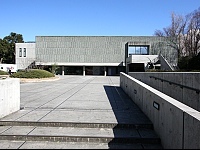 |
|
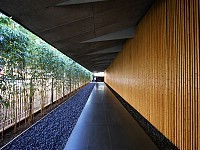 |
|
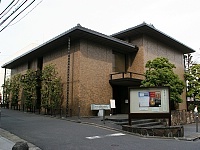 |
|
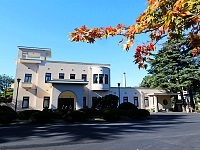 |
|
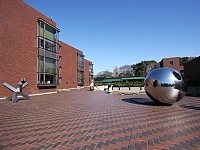 |
|
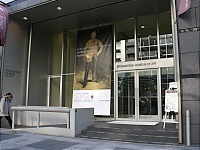 |
|
Roppongi Art Triangle
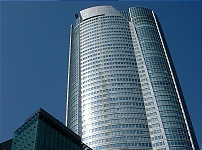 |
|
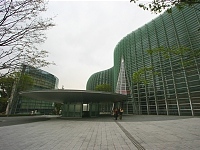 |
|
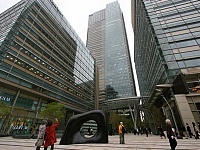 |
|
4Hours in Tokyo
as of June 2013
Sightseeing in Tokyo: Old Japan, New Japan
start at
 (c)Yasufumi Nishi
(c)Yasufumi Nishi
 (c)Shochiku Co., Ltd.
(c)Shochiku Co., Ltd.

[JR Tokyo Station]
Take snapshots around the station's beautifully restored building: 15 minutes
 (c)Yasufumi Nishi
(c)Yasufumi Nishi
↓ Walk 3 minutes to
[KITTE]
Visit JP Tower Museum Intermediatheque (IMT): 30 minutes (Free Admission)
↓ Walk 5 minutes to
[Marunouchi Cafe SEEK]
Take a Japanese handicrafts class: 40 minutes (Free of Charge)
↓ Walk 15 minutes to
[Ginza "Kabukiza Theatre"]
Take the tour and visit the gift shop: 60 minutes
See a single act of a kabuki play: About 30-90 minutes (varies by act); 900-2,000 yen
*Regular ticket for one performance (2-3 acts): 4,000-20,000 yen
See a single act of a kabuki play: About 30-90 minutes (varies by act); 900-2,000 yen
*Regular ticket for one performance (2-3 acts): 4,000-20,000 yen
 (c)Shochiku Co., Ltd.
(c)Shochiku Co., Ltd.
↓ Walk a few minutes to
[Ginza "Brand Street"]
Stroll the high-end boutiques of this famous luxury shopping district: 30 minutes
↓ Walk 7 minutes to
[Lunch at Sushi Bar]
Lunch: 30 minutes; approx. 1,000 yen

Estimated Total Budget: 3,000 yen
[Option A: Art Tour (1000 yen)]
[Option B: Business Building Tour (Free Admission)]
[Option C: Shopping and Gourmet Tour]
This itinerary is intellectually stimulating. It gives a point of contact with Japanese history, while also offering something new. We also focused on places that were reasonably priced.
JR Tokyo Station
 (c)Yasufumi Nishi
(c)Yasufumi Nishi
In continuous use for more than 90 years, the Tokyo Station building is the nexus of Japan's railway network. It is also a Tokyo landmark and architectural masterpiece. It was originally built in 1914, in the Gothic Revival style, and was designed by the renowned architect Tatsuno Kingo. Boasting a 335-metre long redbrick facade, it took six and a half years, and the combined efforts of 740,000 workers, to complete. During the war in 1945, it lost its iconic north and south domes, as well as other decorative features, to fire. A preservation and restoration project was launched in 2007 and completed in October 2012, returning the station building to its original appearance.
KITTE
Just opened in March 2013, KITTE is a shopping mall across the street from and directly connected underground to Tokyo Station.
Its 98 fascinating, highly original shops and restaurants reflect KITTE's strong "Japan" appeal and include 30 places selling fashion and fashion accessories. Prices for clothes and accessories tend to be more affordable than in shops in the Marunouchi and Shin-Marunouchi Buildings. The first basement floor features outposts of popular vendors of delicious traditional and modern delicacies representing many regions of Japan, all the way from Hokkaido to Okinawa. Plenty of free samples are on offer!
KITTE (the Japanese word for postage stamp) also includes the Intermediatheque (IMT), a museum jointly operated by Japan Post Co. Ltd. and the University Museum of the University of Tokyo (UMUT). The permanent exhibition of IMT consists of about 7,000 artefacts, which have been selected from the world-class collections accumulated by the University of Tokyo since its foundation in 1877. These objects are exhibited with a unique, eclectic design approach that the museum calls "retrofuturism." From wildlife specimens - including the extinct "elephant bird" Aepyornis, Moa eggs and giant crocodile skeletons - to the world's largest gold and platinum nuggets, to ancient pottery, IMT offers a new way to encounter important objects from both natural and cultural history.
IMT also hosts special exhibitions and events that highlight contemporary scientific research and artistic expression, while keeping to the same "retrofuturistic" curatorial approach as the permanent exhibition.
Consult the IMT website for schedules and other details :
http://www.intermediatheque.jp/en/schedule
http://www.intermediatheque.jp/en/schedule
Address
2-7-2 Marunouchi, Chiyoda-ku, Tokyo, 100-7001
2-7-2 Marunouchi, Chiyoda-ku, Tokyo, 100-7001
Marunouchi Cafe SEEK
Marunouchi Cafe SEEK opened in January 2012, to provide a venue that foreign visitors to Tokyo would find welcoming and genuinely useful. It offers convenient services including free Wi-Fi, a library of tourist literature and other resources of interest to foreigners visiting Japan. SEEK also serves as a gallery, presenting exhibits about Japanese art and culture. And it hosts events and hands-on classes related to traditional Japanese arts such as origami and calligraphy.
Adding to the convenience, on the first floor of the same building is a JNTO Tourist Information Center (TIC).
For more information, please visit the English website :
http://www.marunouchicafe.com/english/
http://www.marunouchicafe.com/english/
Address
2F Shin Tokyo Building, 3-3-1 Marunouchi, Chiyoda-ku, Tokyo 100-0005
2F Shin Tokyo Building, 3-3-1 Marunouchi, Chiyoda-ku, Tokyo 100-0005
Kabukiza Theatre
 (c)Shochiku Co., Ltd.
(c)Shochiku Co., Ltd.
Kabukiza Theatre is a flagship theatre of Kabuki, a traditional Japanese performing arts. It has stood on the same site since 1889. After a reconstruction, including the building of a multipurpose office high-rise, Kabukiza Theatre opened again in April 2013. The daily program consists of 2 or 3 performances with 2 or 3 acts each. The line-up changes monthly. If you'd like just a taste of Kabuki, withought spending too long at the theatre, a "hitomakumi" single act ticket is an economical way to see one part of a performance in this daily program. To enable non-Japanese speakers to follow the performance, an English Earphone Guide rental service is provided. Just go to the Earphone Guide counter to rent. The cost of the rental for a single act is 500 yen and for a full performance(2 to 3 acts) is 700 yen, with a 1,000 yen deposit that is refunded when you return the receiver.
You can also get a sense of the world of Kabuki in the Kabukiza Gallery and the Rooftop Garden.
For more information, please visit the English website :
http://www.kabuki-bito.jp/eng/
http://www.kabuki-bito.jp/eng/
Address
4-12-15 Ginza, Chuo-ku, Tokyo, 104-0061
4-12-15 Ginza, Chuo-ku, Tokyo, 104-0061
Lunch at Sushi Bar

There is a sushi bar which serves sushi with a creative twist, embracing the sushi rolls that are so popular in global sushi cuisine, while using innovative ingredients and preparation methods. The extensive menu (available in English) features seasonal vegetables and seafood, and includes more than 30 different original sushi rolls.
Option A: Art Tour (1000 yen)
Idemitsu Museum of Arts
The Idemitsu Museum of Arts is located in the Imperial Theatre Building, a 13-minute walk from Tokyo Station. It looks out over the beautiful gardens of the Imperial Palace. First opened in 1966 to exhibit the collection of East Asian antiques assembled over some 70 years by Sazo Idemitsu (1885-1981), it reopened after a renovation in 2007. The new space honours the traditional Japanese aesthetic of the museum's original design, while adding a contemporary touch. It provides an inviting, relaxing atmosphere in which to appreciate the museum's numerous artworks, many of them National Treasures or Important Cultural Properties. Many historical styles of Japanese painting, ukiyo-e woodblock prints, works by modern Japanese painters such as Kosugi Hōan, calligraphy, East Asian ceramics (ancient and modern) and more are represented. There are even a few Western painters on display. Themed special exhibitions are held six or seven times a year.
Consult the museum's English website for details:
http://www.idemitsu.com/museum/
http://www.idemitsu.com/museum/
Address
9th Floor, Teigeki Bldg., 3-1-1 Marunouchi, Chiyoda-ku, Tokyo, 100-0005
9th Floor, Teigeki Bldg., 3-1-1 Marunouchi, Chiyoda-ku, Tokyo, 100-0005
Option B: Business Building Tour (Free Admission)
Bank of Japan and Currency Museum
The Bank of Japan is a 12-minute walk from Tokyo Station. Completed in 1896, the Bank of Japan building was registered as an Important Cultural Property in 1974. With advance reservations, you can take an English-language tour of Bank of Japan facilities normally off-limits to the public, including the old underground vault, the former offices, and an archives display room.
The Currency Museum has a collection of about 4,000 artefacts, ranging from the currencies of Japan through the ages, and of other East Asian countries, to related items such as wallets and lottery tickets.
Highlights include authentic gold coins minted in the 16th century by samurai warlords, with full-scale replicas that visitors can pick up and handle, and a presentation on the latest anti-counterfeiting technologies used in current Bank of Japan notes. Various unique notes and coins from around the world are also on display.
For more information, please visit the English website :
http://www.boj.or.jp/en/about/services/kengaku.htm
http://www.boj.or.jp/en/about/services/kengaku.htm
Address
In-House Tours of the Bank: 2-1-1, Nihonbashi-Hongokucho, Chuo-ku, Tokyo,103-0021
Currency Museum (Institute for Monetary and Economic Studies): Bank of Japan Annex Building, 1-3-1 Nihonbashi-Hongokucho, Chuo-ku, Tokyo, 103-0021
Option C: Shopping and Gourmet Tour
Coredo Muromachi
Coredo Muromachi is a multipurpose complex a 14-minute walk from Tokyo Station in the historic Nihombashi district. It has five floors of retail, mainly eateries with a few other culinary-related shops. A common thread among these establishments is the convergence of the best of Japanese food traditions with fresh, contemporary flair. Coredo Muromachi's elegant decor evokes the classic Japanese architecture of teahouses and old-fashioned wooden homes.
For more information, please visit the English website :
http://mi-mo.jp/lng/eng/muromachi.html
http://mi-mo.jp/lng/eng/muromachi.html
Address
2-2-1 Muromachi, Muromachi Nihombashi, Chuo-ku, Tokyo, 103-0022
2-2-1 Muromachi, Muromachi Nihombashi, Chuo-ku, Tokyo, 103-0022
Subscribe to:
Posts (Atom)